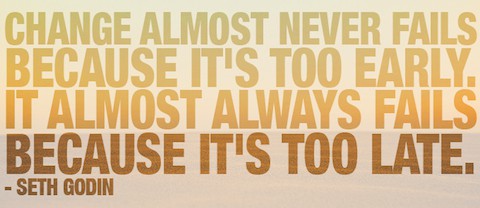Innovation Series: We’re All Biased

The 20th century was one of unprecedented change. With each advancement, each innovation, new things were afforded to the public. Cars enabled rapid transit from town to town. Photographs meant memories could live forever. Computers have forever changed how we think about the speed at which information is exchanged.
If we’re honest, we can admit our bias to the status quo. We love our modern conveniences and can’t live without the innovations that we have, but we don’t believe we need any more innovation. We can look at our lives today and wonder what a world without cars even looks like. Within arm’s reach are a handful of different computers (tablet, laptop, phone, fitness tracker, etc), but as much as we are addicted to our modern conveniences, many of us are hesitant about the path forward into the next series of innovations.
Do we really want to broadcast our location to our friends? What if someone robs us? Do I really want that picture to outlive me, always defining who I am? Do I really want my lesson plans on a public Google Calendar? Do I really want to text my class to remind them about their homework assignment? Aren’t there inherent dangers in that level of connection?
Innovation bias is chiefly this: we are ready to adopt those innovations for which we feel the most pain in need of relief. It’s only when new innovations cause disruption in the status quo that cause us pain that we begin to open up to new ideas. As old systems become obsolete, we cry desperately for some solution that will alleviate the discomfort. We then spend an inordinate amount of time trying to play catch-up for fear of being left behind. What if we could find more balance in our approach to innovation? What if we could evaluate ideas fairly and reasonably, extracting the ideas of merit and rejecting the ideas that don’t belong? How could our students benefit from this kind of steady, even change process?
This month, Getting Smart is focusing on what’s next in schools. Many of us are under the (false) impression that innovation is a destination. We believe that once we get there we’ll be able to stop (or at least slow down). We want to believe that we can simply ‘fix’ schools, pushing them to a plateau of success and then we can take a breather. But this belies the very nature of innovation. If you aren’t moving forward, you’re being left behind. There is no stasis with innovation, only movement. We must learn to love the process, the movement of innovation, not just the outcomes. It’s time to embrace the movement of innovation. Forward.







0 Comments
Leave a Comment
Your email address will not be published. All fields are required.